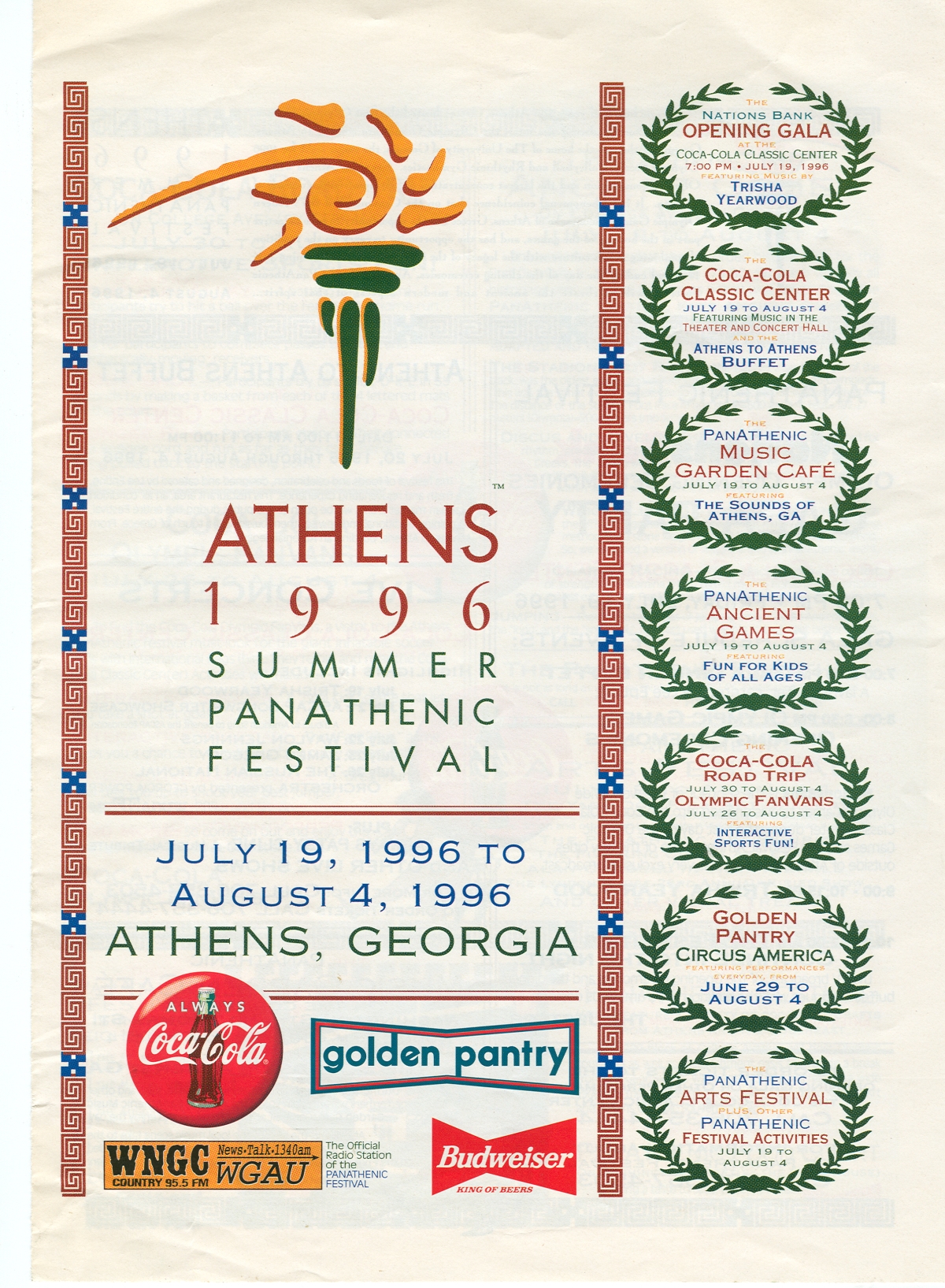Where were you in July 1996? If you were here in Athens, you may have been one of the hundreds of volunteers involved with Athens 96. If you weren’t here in Athens, you may be asking what this is. Well, keep reading as we explore how the 1996 Olympics in Atlanta impacted our town.
The 1996 Olympics are most known for being in Atlanta; however, locations for the games were spread out across the entire Southeast — from Florida, to Tennessee, and throughout Georgia. The Atlanta Olympics Committee announced the need for secondary locations and the people of Athens rose to the occasion; town leaders including Mayor Gwen O’Looney, newsman Dick Mendenhall, and faculty of the University of Georgia began planning for the potential of the Olympics coming to Athens. These community members organized pep events in Athens and Atlanta to display Athens’ interest in hosting parts of the Olympics. After pep rallies and other lobbying work, Athens 96 succeeded. Athens was chosen to be the location for the knockout rounds of Men’s and Women’s Soccer (Sanford Stadium), Volleyball, and Rhythmic Gymnastics.
Seeing the success of this event, these community members created the corporation Athens 96, dedicated to serving as a liaison between the multiple moving parts of the Athens Olympics Bid — the city government, the University of Georgia, and the Atlanta Committee for the Olympic Games (ACOG). The board governed all aspects of the Olympics in Athens, from transportation to medical resources, budget to volunteers. They also coordinated public programming across town including concerts, events, and programming at the Athens Clarke County Library.

Athens 96 heavily impacted the Athens community through volunteer coordination as well. They began the Ask About Athens program, a volunteer program designed to extend beyond the Olympics, creating a contingent of Athens Ambassadors. Volunteers also proposed and completed Legacy Projects before, during, and after the games, intended to beautify the city while residents were enthused about the Olympics. Projects included clean-ups in Sandy Creek Park, donations to local soccer teams, and flower planting.
You can take a retrospective look at the planning of events and programs as well as the behind-the-scenes planning it takes to run an event as large as the Olympic Games in the Athens 96 collection (MSS 054). If you’d like more information about Athens 96, contact the Heritage Room at heritageroomref@athenslibrary.org.
Works Cited
Athens 96 collection, MSS 054, Heritage Room, Athens-Clarke County Library. https://aspace-arls.galileo.usg.edu/repositories/2/resources/62








